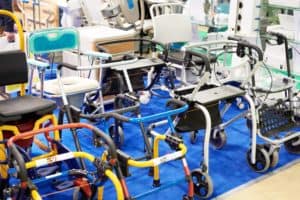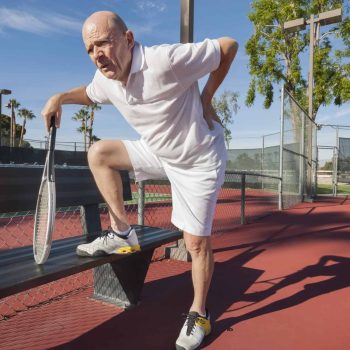

Mobility & Disability
At What Age Does Falling Become A Health Risk?
SonderCare Learning Center

SonderCare Learning Center
According to the United Health Foundation, 20% of falls in those aged 65 and older result in serious injury. According to a 1991 study by Berg and Cassells published by the NCBI, those most at risk are men over 85. The researchers asserted that the largest risk came from the often-lengthy wait for assistance rather than the fall itself.
Older adults diagnosed with osteoporosis or low bone density are more likely to experience fractures. Bone density begins to decline at a rate of around 1% per year from age 50 onwards. Regular screening of bone density in this age group can assist with the early diagnosis and treatment of osteoporosis.
Fractures are among the most common injuries that seniors experience after a fall. Wrist injuries are frequent, too, as people reach out to try to break their falls. Their impact with the ground most often damages the hip, pelvis, and humerus.
Seniors may experience cracked or broken ribs, lacerations, joint dislocation, and hematomas. These injuries are painful and may take some time to heal.
It’s easy to focus on the negative statistics and gloss over the 80% of falls that don’t result in serious injuries. Older adults should certainly take preventative precautions, but not be so fearful that it affects their social health.
When the fear of injury causes older adults to isolate themselves, they are more likely to experience depression.
The fear is understandable. Fractures in this age group are often slow to heal and may also result in a long-term mobility loss.
In some cases, the fear is precipitated by tripping. Even if the person doesn’t sustain serious injuries, they’re likely to be wary in the future. Patients may feel unsafe being on their own and decide to admit themselves to a care facility.
Older adults with excessive anxiety about injury should seek support. They may approach their families or health care practitioners for safety tips.
Older people with poor balance can do many things to prevent tripping as well as to alleviate their anxiety over it.
They may install support bars and other aids in their homes. A support bar can help them steady themselves in the shower or when climbing stairs. Securing loose carpets and using specially-designed mats on tiles will provide more security.
Furniture in the home may also make a significant difference. SonderCare is a company that creates bedroom furnishings specially made for senior citizens. Their products include:
Another recommendation is to consider clearing cluttered spaces to ensure the ability to walk without tripping. A medical panic button or app to call assistance might provide assurance that help is at hand.
Older adults who take chronic medication should speak to their doctors about changing the prescription. They should tell their doctors if their medicine causes dizziness, a loss of balance, or if it seems to be affecting their cognitive abilities.
Low lighting in the home may present a hazard. Older adults should consider installing brighter bulbs or adding additional lamps to offset this risk.
Declining skeletal muscle mass often contributes to the severity of the injury. People with reduced muscle strength are more likely to adopt gaits that predispose them to fall. Posture exercises, pace, and strength training can be a useful preventative measure.
Exercise also benefits seniors by:
Older adults don’t necessarily need to sign up for a gym subscription. The American Heart Association recommends 150 to 300 minutes of moderate exercise a week to maintain good health. Even those with limited mobility should be able to meet these goals.
Falling becomes one of the top senior health risks starting around the age of 65. Only about 20% of these incidents result in serious injury, however. Seniors should think about ways to take precautions against the dangers but should remember not to let fear prevent them from living their lives to the fullest.
For all genders, the risk of fatal falls grows significantly with age, peaking at 85 years and older.
Elderly individuals over the age of 70 are threefold more likely to die as a result of a ground-level fall than those under the age of 70.
Anticipated, Unanticipated and Accidental are the three fall categories that exist. Anticipated falls occur mostly in the hospital during monitored rehab or post surgery scenarios. Unanticipated falls occur under a recovery or supervised scenario and may be attributed to negligence or unavoidable circumstance. Accidental falls happen typically at home unsupervised or out in public due to dangerous circumstances.
Start Exploring Mobility & Disability With SonderCare
Are you recently discharged from hospital, experiencing mobility issues, or in need of palliative or senior care? Enjoy a smoother recovery and get the luxury you deserve by choosing our home hospital products. Contact us today to discuss home hospital beds, mattresses, stand assist chairs and other accessories to make your home hospice perfect for a truly comfortable experience.
Are you looking for the most recent articles on physical disability resources? Browse our latest resources below and let us know if you have any questions. We’re here to support you as you embark on your road to home medical care.
Seeking The Best Care For Your Loved One?
Browse North America's Luxury
Mobility & Disability
Product Inventory